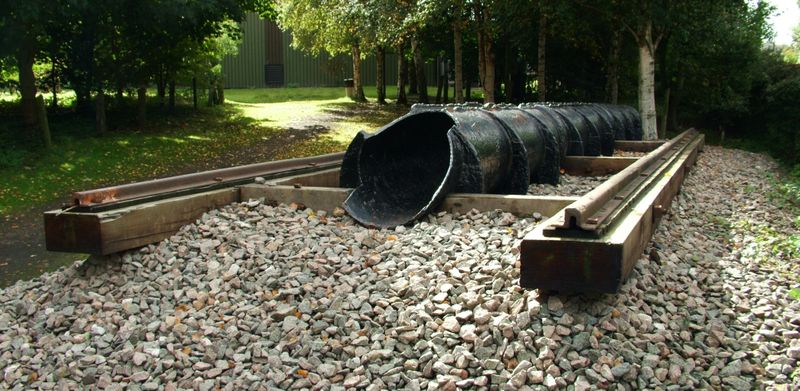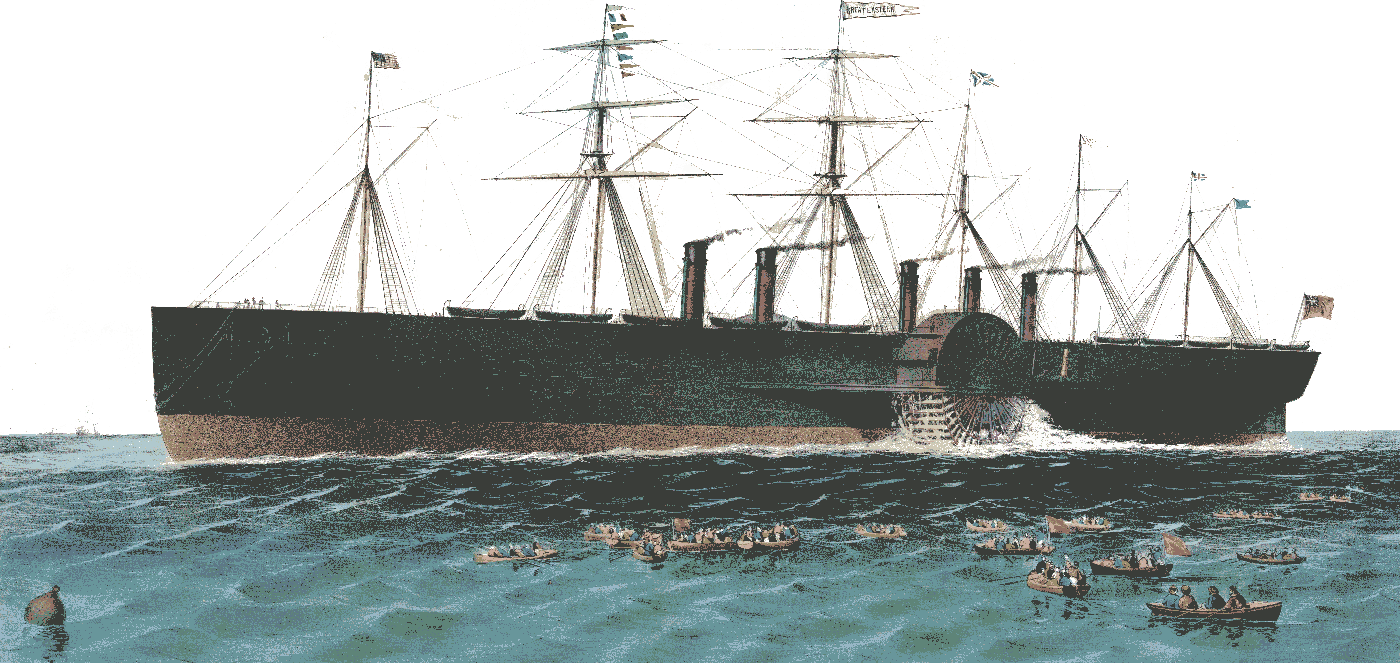Atmospheric Railway

Another of Brunel's interesting though ultimately unsuccessful technical innovations was the atmospheric railway – the extension of the GWR southward from Exeter towards Plymouth (technically the South Devon Railway (SDR), though supported by the GWR).
 Instead of using locomotives, the trains were moved by a system of atmospheric (vacuum) traction, with the air being extracted from pipes laid between the rails by stationary engines at a series of pumping stations along the line. The section from Exeter to Newton (now Newton Abbot) was completed on this principle, and trains ran at approximately 20 miles per hour (32 km/h). 15 inch (381 mm) pipes were used on the level portions, and 22 inch (559 mm) pipes were intended for the steeper gradients.
Instead of using locomotives, the trains were moved by a system of atmospheric (vacuum) traction, with the air being extracted from pipes laid between the rails by stationary engines at a series of pumping stations along the line. The section from Exeter to Newton (now Newton Abbot) was completed on this principle, and trains ran at approximately 20 miles per hour (32 km/h). 15 inch (381 mm) pipes were used on the level portions, and 22 inch (559 mm) pipes were intended for the steeper gradients.
Unfortunately the technology required the use of leather flaps to seal the air pipes, the leather had to be kept supple by the use of tallow, and tallow is attractive to rats; the result was inevitable, and air-powered vacuum service lasted less than a year, from 1847 to September 10 1848. The accounts of the SDR for 1848 suggest that the atmospheric traction cost 3s 1d per mile (£0.10/km), compared to 1s 4d (£0.04/km) for conventional steam power. The pumping station at Starcross, on the estuary of the River Exe, remains as a striking landmark, and a reminder of the atmospheric railway — which is also commemorated in the name of the village pub.
A section of the pipe, without the leather covers, is preserved in Didcot Railway Museum
Back to Topics
Useful additional information
(Websites open in a new window)



